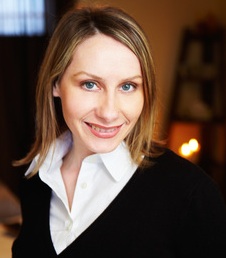
Features
Continuing Education
Education
Case for collaboration
 Although many massage therapists hold more than one degree or use multiple modalities and are educated up to the eyeballs, we are still underestimated and misunderstood. As a community we are disconnected even from each other, segregating ourselves by area, experience and style. Yet, given the opportunity, in a group discussion with colleagues of complementary modalities, we have much to offer.
Although many massage therapists hold more than one degree or use multiple modalities and are educated up to the eyeballs, we are still underestimated and misunderstood. As a community we are disconnected even from each other, segregating ourselves by area, experience and style. Yet, given the opportunity, in a group discussion with colleagues of complementary modalities, we have much to offer.
December 9, 2013 By Patricia Reynolds
It occurred to me that if we were able to bounce treatment ideas off
other practitioners on a case-by-case basis, our patients would have
access to the highest level of care – that of combined education and
perspectives. I began to have some big ideas regarding practice.
Last
summer I decided to create an event for my local community where
alternative therapists of diverse disciplines could meet and offer
solutions to pain and dysfunction in relation to the epidemic of our
ailing health-care system. Five of us got together and gave
presentations, offered free treatments and consulted with participants
on many different health issues that day. We found that although our
education differed, our philosophies and vision remain aligned.
As
massage therapists we often feel isolated and left out – not being
referred by doctors or being vilified by insurance companies. This event
gave us an opportunity to get to know one another and understand how
our bodies of knowledge complemented that of other therapies. This gave
us a platform from which to discuss with the public, specifically our
local community, what is happening with the Ontario Health Insurance
Plan (OHIP) and how alternative therapies aim to prevent and help to
relieve the inevitable crash of the current system.
The truth is,
as massage therapists we’re very much a part of the solution, as are
our colleagues from other disciplines. Once we start the conversation
and ask some questions we can begin to learn about their goals and
vision for health care. We may even find we are working toward the same
end game.
Many chiropractors, naturopaths and physiotherapists
are happy to work alongside massage therapists and cross-refer. We all
have limits to what we can offer and achieve, it makes sense to have
another professional to refer to whom you know you can trust and will
work within the same philosophy of care that you do. At the end of the
day, providing safe and effective health care is the ultimate intent.
Our
clients rely on us to take their pain and dysfunctions seriously. To
provide them with accurate information and use techniques that work to
relieve symptoms and create long term rehabilitation. Additionally, they
expect us to refer them out when we encounter an issue we are not
equipped to deal with. If we isolate ourselves within our medical
communities, who will we trust with their care when we’ve hit a wall
with how far we can take them?
Don Dillon, a fellow therapist and
a leader in our massage community, has talked extensively about
creating a new business model for CAM (complementary and alternative
medicine) practitioners; a model that involves combining forces, working
together, creating a presence in the community, having wellness become
the norm in our society. Though my fellow community practitioners and I
do not currently share a space, we certainly share a common goal and
work together with many of the same clients to achieve optimum care.
The
relationships with these clients have deepened as they now understand
my commitment to their health. As a result, they are referring their
friends and bringing along their children for assessment. I can’t think
of a better way to build a solid and successful practice. Some ideas
really are worth pursuing.
——–
Patricia Reynolds is a sole
practitioner with a home studio in the west end of Toronto. She has
provided massage therapy for over 16 years and in recent years has added
yoga and structural integration to her repertoire. She continues to
take an interest in the growth and ethics of the industry and holds
health care integration as her ultimate goal – for massage therapy to be
viewed as an essential part of a health-care team.
Print this page